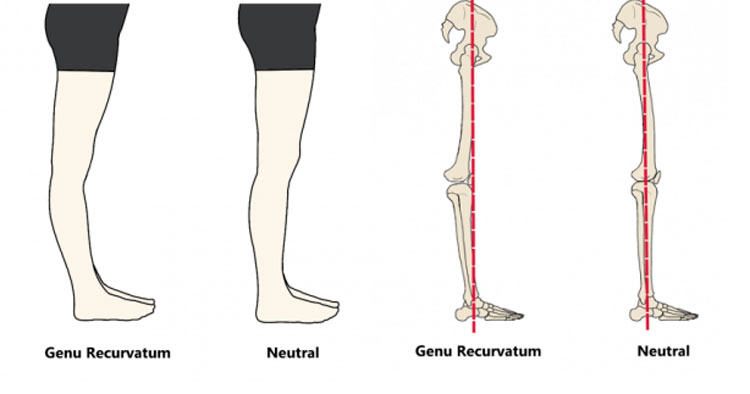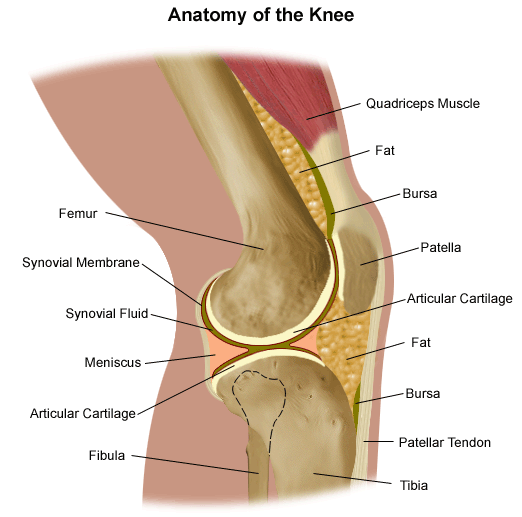Sports Injuries and Management
Fat Pad Syndrome: Also Known As Hoffa’s Syndrome
What Is Fat Pad Syndrome?
There are many structures capable of causing anterior knee pain. One such source, is impingement of the fat pad, the knee fat pad, known as the infrapatella fat pad, is a mass of fatty tissue lying just below the kneecap. Positioned behind the patella tendon, the fat pad is wedged in, enclosed by bone and soft tissue (refer to the image below). It is a sensitive tissue and considered to be a fairly common cause of pain in the front of the knee. Irritation and impingement (pinching) of the fat pad, is referred to as fat pad syndrome, also known as Hoffa’s Syndrome.
Potential Causes Of Hoffa’s Syndrome
Hoffa’s Syndrome can occur when the infrapatella fat pad becomes irritated. Irritation may occur due a number of possible causes, ranging from, a direct blow to the area, a hyperextension injury or chronic irritation…
- The infrapatella fat pad sits just below the knee cap, therefore variations in knee or kneecap biomechanics and anatomy, may potential in-turn increase (or decrease) the risk of developing impingement of the fat pad.
- One such variation that is reported to increase the risk is the situation of naturally occurring hyperextension of the knee, medically known as genu recurvatum. Individuals with genu recurvatum (a knee that excessively bends backwards in standing, refer to the title image), can be a higher risk of developing impingement of the fat pad. Because the bottom tip of the patella referred to as the inferior pole, can pinch against the fat pad compressing it during many normal daily activities, even simply walking or standing.
- Hyperextension injury, is another cause of fat pad syndrome, When the knee is unnaturally forced into a position of extreme extension, such as can occur when landing from a jump, or being tackled in sport… This action can traumatically trigger fat pad syndrome. The forced pinching of the inferior pole of the knee cap against the fat pad in a one off high force situation can be enough to trigger Hoffa’s syndrome.
- Equally a direct blow to the knee can impact and irritate the fat pad. Examples of direct blows would include a fall forward onto the front of the knee, a motor vehicle accident, a tackle or kick to the front of the knee via an opposition player when playing sport…
- Tight quadriceps have been suggested to create a situation of increased pull/tension on the patella and patella tendon, potentially causing impingement of the fat pad. have been highlighted as another potential cause of developing fat pain pain.
- Degenerative knee complaints such as osteoarthritis has been highlighted as another potential cause of developing fat pad pain.
- Fibrosis (hardening) of the fat pad are other possible causes of Hoffa’s syndrome.
Symptoms Of Fat Pad Syndrome
With Hoffa’s syndrome pain may be aggravated by performing jumping activities, prolonged standing, or any position that has the potential to cause the knees to hyper-extend. Unlike patella tendinopathy which can cause pain in a similar location, with fat pad impingement the pain location isn’t confined to the proximal tendon, as a rule pain coming from the patella tendon has a tendency to be more localised than when coming from a symptomatic fat pad.
Some common signs and symptoms of Hoffa’s Syndrome may include:
- Pain in the front of the knee, situated just below the knee cap.
- Possible swelling, again this swelling positioned below the knee cap.
- Pain when straightening the knee into full extension, or positions of hyperextension. Including activities of daily living including simply when standing for prolonged periods of time, resting the leg out straight, such as putting your feet up on the coffee table, standing and walking around wearing high heels, these situations all encourage hyperextension of the knee and have the potential to cause pain of varying degrees.
- With in sport someone suffering with fat pad pain will most likely have pain with kicking and jumping maneuvers, both kicking a ball and jumping can rapidly move the knee into hyperextension sometimes triggering a sharp pain.
Disclaimer: Sydney Physio Clinic provides this information as an educational service and is not intended to serve as medical advice. Anyone seeking specific advice or assistance on Fat Pad Syndrome: Also Known As Hoffa’s Syndrome should consult his or her physiotherapist, podiatrist or general practitioner.



